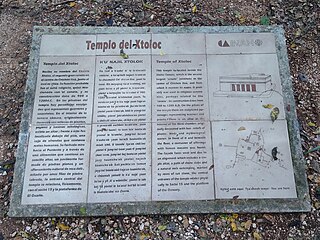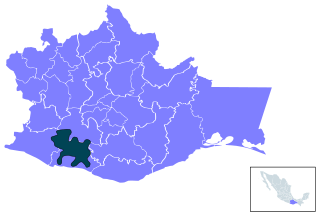Mayo is an Uto-Aztecan language. It is spoken by about 40,000 people, the Mexican Mayo or Yoreme Indians, who live in the South of the Mexican state of Sonora and in the North of the neighboring state of Sinaloa. Under the General Law of Linguistic Rights of the Indigenous Peoples" Law of Linguistic Rights, it is recognized as a "national language" along with 62 other indigenous languages and Spanish which all have the same validity in Mexico. The language is considered 'critically endangered' by UNESCO.

The Constitution of Mexico does not declare an official language; however, Spanish is the de facto national language spoken by over 99% of the population making it the largest Spanish speaking country in the world. Due to the cultural influence of the United States, American English is widely understood, especially in border states and tourist regions, with a hybridization of Spanglish spoken. The government also recognizes 63 indigenous languages spoken in their communities out of respect, including Nahuatl, Mayan, Mixtec, etc.

Indigenous peoples of Mexico, Native Mexicans or Mexican Native Americans, are those who are part of communities that trace their roots back to populations and communities that existed in what is now Mexico before the arrival of Europeans.

The Zapotec languages are a group of around 50 closely related indigenous Mesoamerican languages that constitute a main branch of the Oto-Manguean language family and are spoken by the Zapotec people from the southwestern-central highlands of Mexico. A 2020 census reports nearly half a million speakers, with the majority inhabiting the state of Oaxaca. Zapotec-speaking communities are also found in the neighboring states of Puebla, Veracruz, and Guerrero. Labor migration has also brought a number of native Zapotec speakers to the United States, particularly in California and New Jersey. Most Zapotec-speaking communities are highly bilingual in Spanish.

Isthmus Zapotec, also known as Juchitán Zapotec, is a Zapotec language spoken in Tehuantepec and Juchitán de Zaragoza, in the Mexican state of Oaxaca. According to the census of 1990 it has about 85,000 native speakers, however this number is rapidly decreasing, as speakers shift to Spanish.

The Triqui, or Trique, languages are a family of Oto-Manguean spoken by 30,000 Trique people of the Mexican states of Oaxaca and the state of Baja California in 2007. They are also spoken by 5,000 immigrants to the United States. Triqui languages belong to the Mixtecan branch together with the Mixtec languages and Cuicatec.

The Triqui or Trique are an Indigenous people of the western part of the Mexican state of Oaxaca, centered in the municipalities of Juxtlahuaca, Putla, and Tlaxiaco. They number around 23,000 according to Ethnologue surveys. The Triqui language is a Mixtecan language of Oto-Manguean genetic affiliation. Trique peoples are known for their distinctive woven huipiles, baskets, and morrales (handbags).
Huave is a language isolate spoken by the indigenous Huave people on the Pacific coast of the Mexican state of Oaxaca. The language is spoken in four villages on the Isthmus of Tehuantepec, in the southeast of the state, by around 20,000 people.

Chatino is a group of indigenous Mesoamerican languages. These languages are a branch of the Zapotecan family within the Oto-Manguean language family. They are natively spoken by 45,000 Chatino people, whose communities are located in the southern portion of the Mexican state of Oaxaca.

Natalia Toledo Paz is a Mexican poet who writes in Spanish and Zapotec. Her work helped to revive interest in the Zapotec language. Ida Kozlowska-Day states that Toledo is "one of the most recognized contemporary poets in the native languages of Mexico."
The Instituto Nacional de Lenguas Indígenas better known by its acronym INALI, is a Mexican federal public agency, created 13 March 2003 by the enactment of the Ley General de Derechos Lingüísticos de los Pueblos Indígenas by the administration of President Vicente Fox Quesada.

The Indigenous people of Oaxaca are descendants of the inhabitants of what is now the state of Oaxaca, Mexico, who were present before the Spanish invasion. Several cultures flourished in the ancient region of Oaxaca from as far back as 2000 BC, of whom the Zapotecs and Mixtecs were perhaps the most advanced, with complex social organization and sophisticated arts.
Zaniza Zapotec is an Oto-Manguean language of western Oaxaca, Mexico. It is one of several Zapotec languages called Papabuco. It has only 10% intelligibility with Texmelucan Zapotec, its closest important relative.
Texmelucan Zapotec is an Oto-Manguean language of the San Lorenzo Texmelucan Municipality in western Oaxaca, Mexico. It is a divergent Zapotec language, having only 10% intelligibility with its closest relative, Zaniza Zapotec. Both go by the name Papabuco.
Rincón Zapotec is a Zapotec language of Oaxaca, Mexico.
Elotepec Zapotec is a Zapotec language of a single village in western Oaxaca, Mexico, San Juan Elotepec in the Municipio of Villa Sola de Vega. It is one of several Zapotec languages called Papabuco, and has 68% intelligibility of Zaniza Zapotec.
Solteco Zapotec is an extinct Zapotec language of western Oaxaca, Mexico. It was perhaps the most divergent Zapotec language.
Antequera Zapotec is the dialect of Zapotec of 16th-century colonial documents such as Córdova 1578.
The Nezahualcóyotl Award of Literature in Indigenous Languages is a Mexican literary prize given to writers who create works in indigenous languages. The award was created in 1993. Arturo Arias of the University of Texas at Austin calls the award the "most prestigious literary award in Mexico and Latin America for indigenous writers." The prize has been awarded biennially since 2000 and includes a cash prize and diploma.

The Nahuatl language in the United States is spoken primarily by Mexican immigrants from indigenous communities and Chicanos who study and speak Nahuatl as L2. Despite the fact that there is no official census of the language in the North American country, it is estimated that there are around 140,800 Nahuatl speakers. During the last decades, the United States has carried out many educational initiatives aimed at teaching Nahuatl as a language of cultural heritage.









